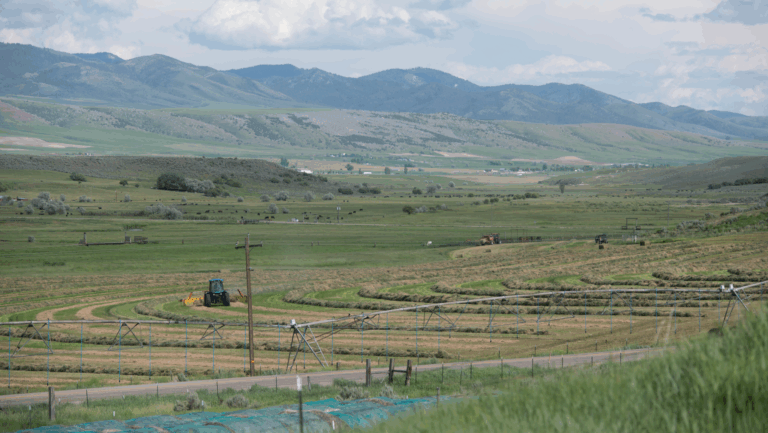Best Practices for Summer Farming
Farmers across the nation are preparing for the seasonal shift to summer using these best practices.
With June 21 marking the official first day of summer, now is the perfect time to discuss summer farming, which for many farmers (especially those in production agriculture) is the busiest season of the year.
In this article we discuss summer farming techniques to enhance your ag operation and best practices for remaining safe on the farm during the season.
Summer Farming Tips, Techniques, and Practices
When welcoming summer, many farmers work to ensure crops are hydrated and protected from potentially harmful elements. For example, heat-sensitive crops like lettuce, spinach, arugula, broccoli, kale, cauliflower, peas, and cilantro tend to suffer when temperatures rise over 80 degrees, making it important to keep these plants shaded.
Shade netting is a popular option for keeping plants cool, as it helps keep soil and air temperatures around 10 degrees cooler while protecting crops from intense sunlight and reducing moisture loss. Ideally, shade netting is suspended several inches above crops on wire, adjustable steel hoops, or a wooden frame.
Summertime is also a time of concentrated weed management efforts for many farmers, and in order to successfully handle these pests, it’s important they answer several questions:
- Will the weeds germinate early or mid-summer?
- How deep in the soil will the seeds germinate?
- How much seed will the weed produce?
- Which weeds are problems at time of establishment versus post crop/planting establishment?
Weed management can involve applying pre-emergence residual herbicides, which can stop weeds before they’re even visible, as well as making timely postemergence herbicide applications. The taller weeds are, the harder they are to control, which will have a greater impact on overall crop production.
Farmers can also employ organic weed control techniques such as crop rotation; planting cover crops; planting a varied selection; ensuring soil is healthy, balanced, and dry (soil compaction reduces crop vigor and tends to promote curtain small seeded weeds, so working wet soil is not typically recommended); delayed planting; pre- and post-emerge tilling; and mulching.
Moreover, summertime is also a good time to go crop scouting. This farming method involves manually checking for uniformity of emergence, furrow closure, compaction, and wetness—all important factors to be aware of when planning for future replanting seasons.
Many farmers also spend time cleaning and inspecting their equipment during the summer season, ensuring each piece of machinery is ready to run come harvest time. It is a critical time to assess whether farm equipment requires repair, replacement, or upgrades which will involve a financial plan to handle these matters.
Finally, don’t forget about livestock. To keep animals cool and healthy, many farmers utilize air circulation systems to help maintain an environment in which heat doesn’t reach dangerous levels. Farmers even go as far as to build shade shelters in their fields to protect livestock from suffering heat strokes. While there are several methods used by farmers to improve the quality of life for their livestock, some of the most common techniques include providing plenty of fresh, cool drinking water; misting systems; water pools; and mud wallows to help livestock stay comfortable and safe in steamy weather.
Stay Safe on the Farm in the Summertime
Summertime means school is out, and for those who have children, it’s important to make sure they understand how to stay safe on the farm. Some best practices include communicating which areas are off-limits without an adult’s supervision, possibly even installing a fence or other boundaries to separate kids from the farm work site entirely, as well as teaching children to look out for moving trucks and tractors.
As for employees, a best practice for farm safety would be to communicate and establish rules revolved around equipment, such as removing all keys from vehicles and machinery when they aren’t in use – and double-checking that all hazardous chemicals are stored safely and are not accessible to children.
Farmers should also protect themselves from heat illness, which occurs when the body can no longer cope with extended exposure to high temperatures. Upon onset, the body’s physical and mental functions begin to break down rapidly. This poses a double threat to farm workers, as those who control machinery are often prone to higher temperatures, thus putting them at a higher risk of losing control of their tractors or equipment. By staying hydrated and taking frequent breaks, farmers can help negate the negative effects of heat exposure.
Sun damage is another common concern for farmers and farmworkers, but can be avoided by wearing protective clothing–including sunglasses, ideally with lenses that filter out at least 90 percent of ultraviolet rays–along with liberally applying (and reapplying) waterproof sunscreen rated SPF 15 or greater.
According to the National Ag Safety Database, solar radiation is greatest between 10:00 a.m. and 3:00 p.m., so if possible, farmers should schedule any outside work for early morning or evening.
Taking the proper safety precautions during summertime will help keep your farm operation running smoothly and on track for the harvesting season.
AgAmerica Lending Helps Farmers Increase Working Capital and Plan for the Next Season
As a farm operator, you understand that planning season is just as important as the planting season. Let us help you with a custom lending solution that is designed for your operational needs. Speak with one of our loan specialist today, or contact us today.






